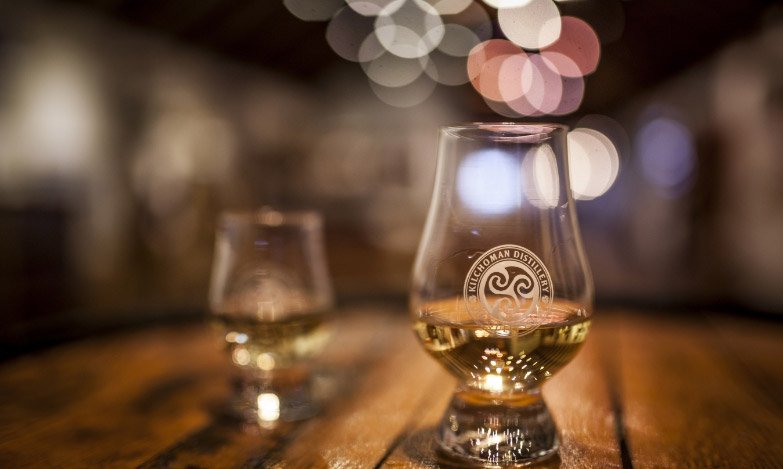BLOG POST
Islay Peat – What’s the big deal?
July 17, 2018Peat plays an essential role in the art of whisky making here on Islay. Generations of Islay distillers have relied on peat to dry their barley ahead of distillation. This process, born of necessity, has set Islay whiskies apart and created arguably the most distinctive and iconic style of Scotch whisky available. However more we are often asked ‘What is peat?’ ‘Where do you get it from?’ ‘What’s so special about Islay Peat?’ Here we delve into the science, history and traditions of peat cutting on Islay and ask why is it so important to creating a true Islay whisky.
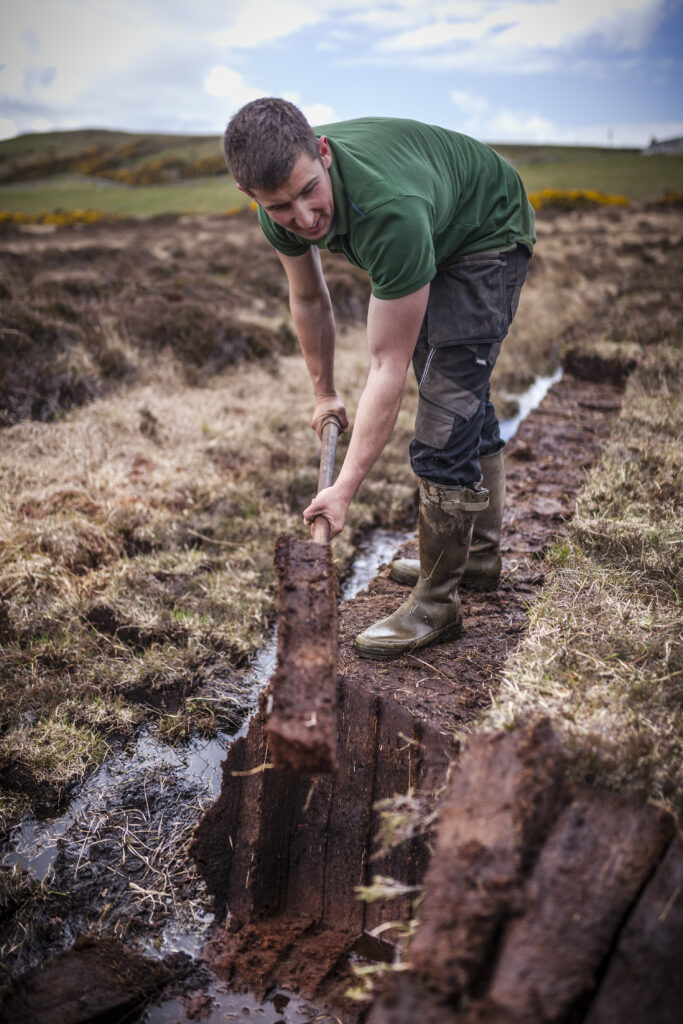
What is Peat?
Peat is vegetation within the ground. It is an accumulation of partially decayed vegetation or organic matter. This is unique to natural areas such as peatlands, bogs and moors. The peatland ecosystem is the most efficient carbon sink on the planet as peatland plants capture C02 naturally which is released from the peat, maintaining an equal balance of the opposing forces. Peat remains essential to many islands who use it as fertilising, retaining moisture and stopping the rate of weed growth within gardens and flower beds.
For centuries however, the primary use of peat has been as a source of heat. Islay and much of the western Isles regularly experience winds in excess of 80mph, as a result trees are few and far between meaning Islanders turned to peat as a fuel. Though it doesn’t burn as hot as wood or coal, peat was readily available at a time when Islay rarely traded with mainland Scotland. As the island modernised, cutting peat for domestic use has become less common, however for some of Islay’s more traditional distilleries peat remains crucial to creating their distinct smoky character.
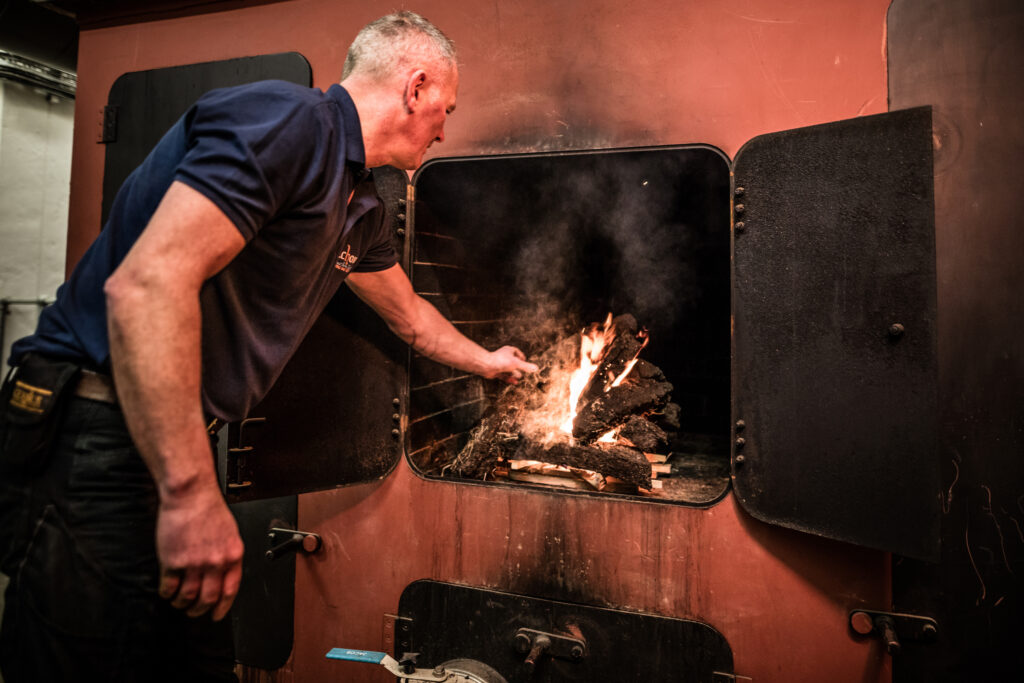
Where does peat come from?
Peat comes from a peat bank; however, peat banks are not easy to come by, there are certain features within the environment that must be considered when looking for a peat bank.
To be a peat bank it must be a minimum depth of 1.5 to 2 metres. The surrounding area should be generally flat, avoiding stones and have plenty of heather growing on top and around the bank. When planning to cut peat, the peat bank should be accessible for not only people but also vehicles so the peat, when ready, is easy to move.
On Islay, the peat season would run from mid-April through to July, any day the locals of Islay were able to cut peat they would. The local peat cutters where expected to cut 18-20 ‘Perches’ a day for the Islay Distillery’s. A ‘Perch’ is a piece of peat 5.5 metres by 5.5 metres. In the 1960’s locals were paid more to cut peat than work within the distillery’s themselves, however it was very hard manual labour.
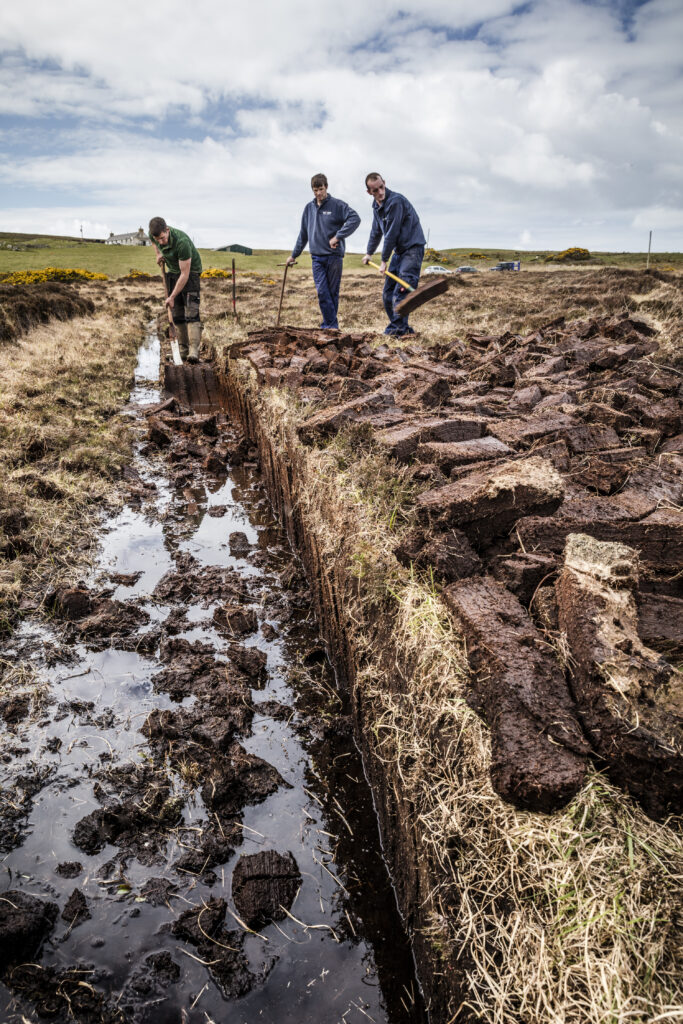
Once the Peat was cut they would carry each perch 5 metres from the end of the bank and lay it down to start to dry. The peat could be left anywhere from 7 days to 3 months depending on the weather. Once the peat had formed a crust they were then moved and placed into something called a ‘Window’ or a ‘Rook’
A window would be made up from the peat that was closer to the top of the bank, this peat was not as delicate as the peat further down within the bank and therefore would hold together better. This peat was placed on top of each other and thus a window was made.
A rook was slightly different, this was the peat that was older and further down within the bank, it was much denser and therefore was easier to break. The peat that made up the rook could be tens of thousands of years old.
The Windows and Rooks would then be left from 3 weeks to 3 months, again very dependent on the Island Weather. The locals would check the peat by breaking a piece off to see if it had dried throughout.
Once the peat was dry, it would be moved off the moss. There were two ways the peat could be taken away, the locals would use old yeast bags from the distilleries or old feed bags from the farm for the peat to be put in. Alternatively, a trailer would be brought in and the peat would be taken away loose. If the peat was taken away loose in a trailer it would then have to be stacked up, this was referred to as ‘grieving the stack’. This was a way in which the peat would be stacked but would shed any rain that fell.
Why does Kilchoman Distillery use Islay Peat?
Kilchoman, though the newest distillery on Islay, is arguably the most traditional in its scale and approach. Growing our own barley is part of this philosophy however equally important is using Islay peat to smoke our barley.
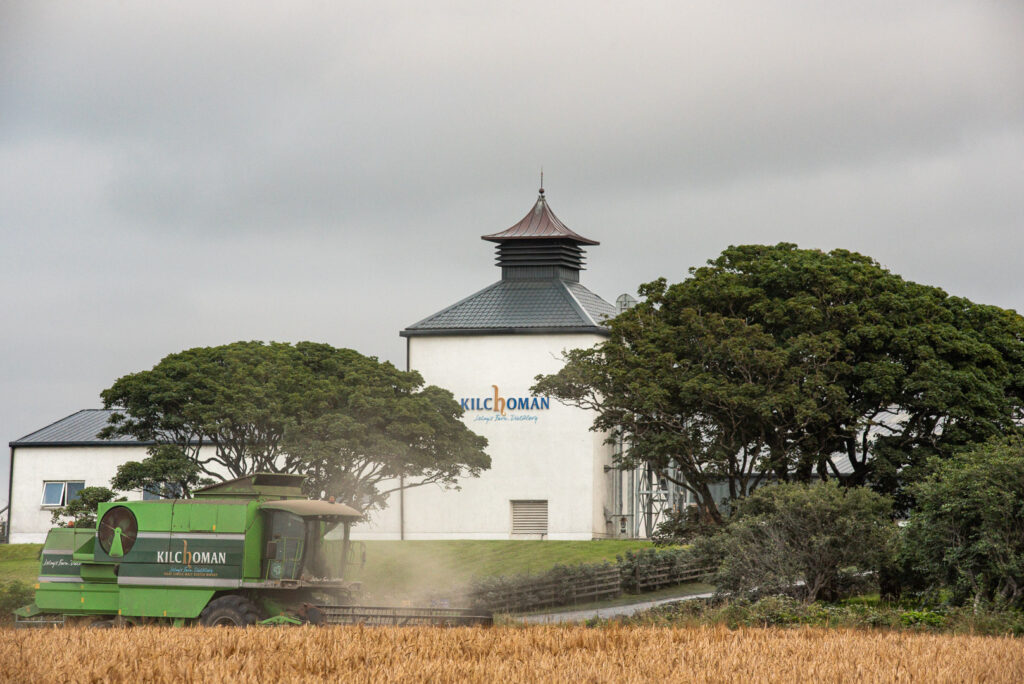
We have two sources of peated barley; we grow approximately 200 tonnes of barley here on the farm, which we malt and peat ourselves using peat cut from Cnoc Dubh banks near the distillery. This accounts for part of our needs, the balance of barley comes from the Port Ellen Maltings, a Diageo run malt house on the south side of the island supplying Kilchoman, Ardbeg, Coal Ila and Lagavulin.
Crucially, both here at Kilchoman and at the Port Ellen maltings Islay peat is burned beneath the malting barley to infuse it with unique Islay peat smoke character which once malted, distilled and bottled sets Islay’s whiskies apart.
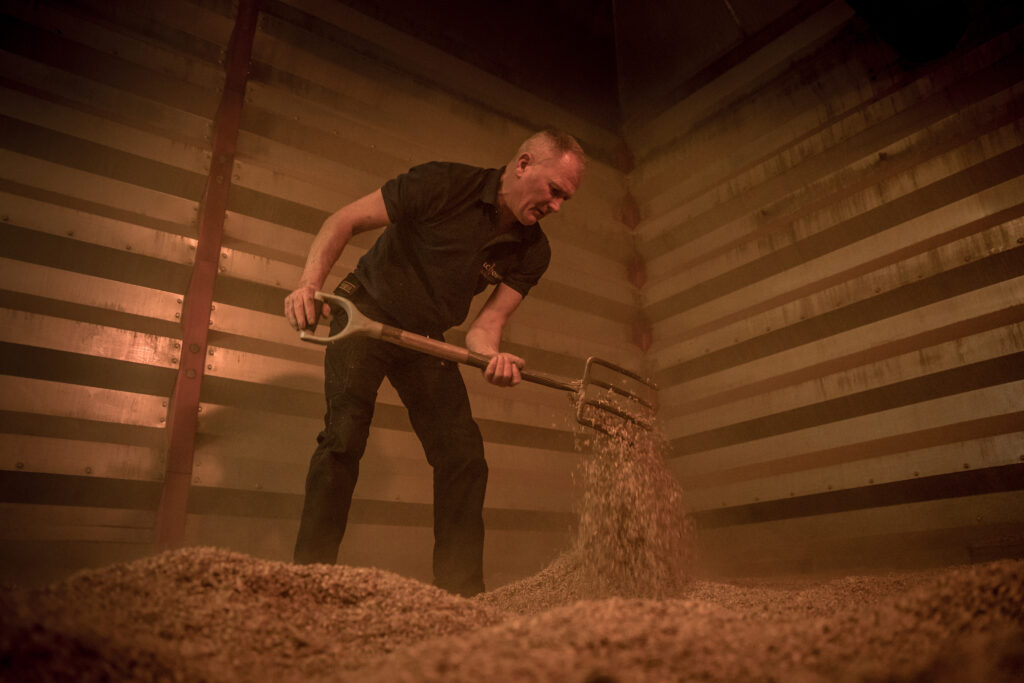
Islay is more exposed to the elements than mainland Scotland. The climate, ocean, wind and rain all have an effect on the island, therefore the peat and the whisky made from Islay peated barley are unlike any other; more salty, maritime and medicinal than mainland peated whiskies.
Discover more about our range of peated Single Malts HERE
READ NEXT
BLOG POST
Kilchoman Day
This year marks a major milestone for Kilchoman: 20 years since we fired up the stills on our farm distillery in the west of Islay, becoming the first new distillery to be built on the island in over 120 years. Two decades later, we remain proudly independent, family run, and…
June 13, 2025

